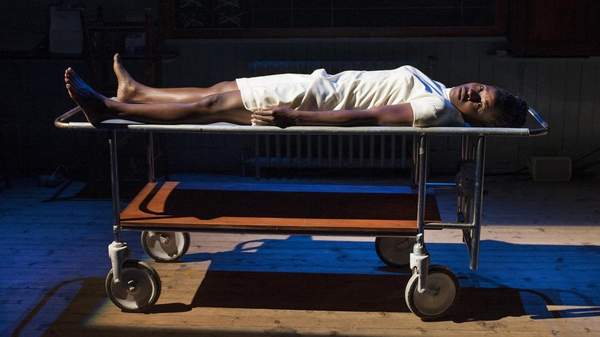Overview
HeLa tells the remarkable and criminally under-told story of Henrietta Lacks, a black woman who died of ovarian cancer in the coloured section of John Hopkins Hospital, Baltimore in 1951. You may not know her name, but you will have benefitted in both profound and trivial ways from her cells; cells which, unlike any other human cells before them, were able to grow and multiply outside the body.
Nobody's figured out why yet, but rumour has it that the cells, taken from a malignant tumour growing on Henrietta's cervix, were so ferociously cancerous they were able to survive in the inhospitable lab environment. "I like to think it's because Henrietta was a strong woman", smiles the playwright/sole actress, Adura Onashile, who has admitted to failing science in high school yet managed to compress a four-inch thick, jargon-heavy biography (The Immortal Life of Henrietta Lacks by Rebecca Skloot) into an accessible hour-long play raising some of the biggest questions in the field of bioethics.
The HeLa cell line - named, by convention, after the first two letters of Henrietta's full name - has, for over six decades, provided the raw material for scientists to test the effects of everything from the polio vaccine to the atomic bomb to cosmetics on the human body. HeLa has played a vital role in every significant medical advancement since Henrietta's death, and the growing of new HeLa cells has now been commercialised.
Crucially, Henrietta was never asked if her cells could be used in this way, as doctors at the time believed the least black patients could do as repayment for free 'treatment' was give up parts of their bodies - and all the information these parts held - in the name of science. You may be inclined to not take offence at this. Surely an individual's right to give consent is not as important as progress; as the lives and livelihoods of millions of others? Surely helping others, including future generations of her own family, would be a dying woman's last wish? But that's the thing - Henrietta was never asked. Her cells were accorded more respect in the petri dish than they were inside her body.
Onashile uses sound, visuals, dance and direct narration to reveal this secret history; this tale of a cell line with blood on its hands. At times she writhes on an old, rusty hospital bed - Henrietta in agony - before assuming the character of a matter-of-fact university lecturer telling the audience about the first time a human cell was successfully cloned (HeLa, 1955) or the human genome was sequenced in full (again, HeLa, 2013). It's an outstandingly nuanced and convincing performance.
This story is one you'll be talking and thinking about for days to come. When does a death stop being personal and become "scientific"? How do you balance the rights of the individual with the common good? Who has ownership of human tissue and genetic information?
You'll be far better equipped to take a stab at these if you check out the play, showing at Q Theatre until 26th October - it's an uneasy watch but very highly recommended.
